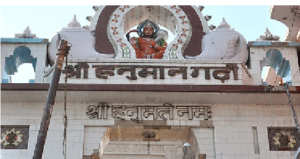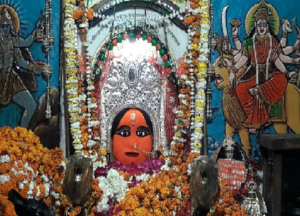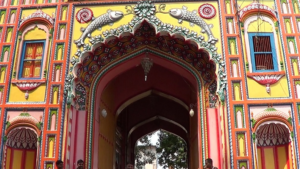Ram Mandir Ayodhya
The ongoing construction of the Ram Mandir, a Hindu temple in Ayodhya, Uttar Pradesh, India, marks the establishment of the historical site of Ram Janmabhoomi, the birthplace of Rama, a prominent deity in Hinduism.
The location previously housed the Babri Masjid, constructed in the 16th century CE.
In 1949, idols of Rama and Sita were placed inside the mosque, which was later attacked and demolished in 1992.
In 2019, the Supreme Court of India ruled in favor of allocating the disputed land for the construction of a Hindu temple, with an alternative plot designated for Muslims to build a mosque.
The court cited a report from the Archaeological Survey of India (ASI) indicating the presence of a non-Islamic structure beneath the Babri Masjid.
On August 5, 2020, the Bhumi Pujan (groundbreaking ceremony) for the commencement of the Ram Mandir construction took place, led by Narendra Modi, the Prime Minister of India.
The ongoing construction is overseen by the Shri Ram Janmabhoomi Teerth Kshetra Trust. On January 22, 2024, Modi served as the Mukhya Yajman (chief patron) during the event, conducting the Prana Pratishtha (consecration) of Ram Lalla.
The Prana Pratishtha ceremony was organized by the Shri Ram Janmabhoomi Teerth Kshetra.
The Pran Pratishtha ceremony of the Ram Lalla idol was presided over by Prime Minister Narendra Modi on January 22.

Places to Visit in Ayodhya
Ram ki Paidi
Ram ki Paidi, situated on the banks of the Saryu River in Ayodhya, Uttar Pradesh, comprises a series of ghats.
Pilgrims flock to this sacred site daily to partake in the ritual of taking a holy bath in the waters of the Saryu River.
Especially illuminated at floodlit night, the riverfront presents a majestic landscape, adding to the spiritual ambiance of the place.
In the past, extensive bathing ghats along the Sarayu River faced immersion due to heavy rains and floods, particularly at Nayaghat.
However, these structures were reconstructed in 1985 to ensure their resilience against such natural challenges.
A noteworthy event took place during the Deepawali celebration in 2019, when Ayodhya achieved a Guinness World Record by illuminating Ram ki Paidi with 450,000 lamps.
This remarkable feat added a festive and celebratory dimension to the cultural significance of the site.

Hanuman Garhi
Hanuman Garhi stands as an imposing structure, resembling a massive four-sided fort adorned with circular bastions at each corner.
Nestled within its walls is a revered temple dedicated to Hanuman, making it Ayodhya’s most sought-after shrine.
Located at the heart of the town, the temple is accessible via a staircase comprising 76 steps.
Legend has it that Hanuman once resided in a cave within Hanuman Garhi, diligently safeguarding the Janambhoomi, or Ramkot.
The primary temple within the complex houses a statue of Maa Anjani with Bal Hanuman seated on her lap.
Devotees believe that a pilgrimage to this sacred site can lead to the fulfillment of their wishes.
Additionally, Ayodhya boasts Kanak Bhawan, a temple steeped in history. According to legend, Rama’s stepmother, Kaikeyi, bestowed this temple upon Sita and Rama as a wedding gift.
Within its sacred walls, one can find statues depicting Sita alongside her husband, Rama.

Deokaali
Linked to various narratives from the Ramayana, this temple is located in close proximity to Naya Ghat.
According to mythology, after her marriage to Lord Rama, Mother Sita brought an idol of goddess Girija Devi to Ayodhya.
King Dashrath had a splendid temple built for the idol, where Mother Sita regularly worshipped the Devi.
Presently, an impressive statue of Goddess Devkali, the local deity, graces the temple.

Nageshwar Nath Temple
Situated at Ram Ki Paidi in Ayodhya, the Nageshwarnath Temple holds a unique legend behind its origin.
According to the lore, Kush, the son of Rama, established this temple.
The tale unfolds with Kush losing his armlet while bathing in the Saryu River.
The armlet was picked up by a Nag-Kanya, who, having fallen in love with him, was a devoted worshiper of Shiva.
In gratitude, Kush built the temple in her honor. Remarkably, the temple remained in good condition until the era of Vikramaditya.
The current structure, dating back to 1750, was commissioned by Naval Rai, the minister of Safdar Jung.
The festival of Shivratri is celebrated grandly at this temple, marked by the significant Shiv Barat procession.
During the festive period of Mahashivratri, the temple attracts a multitude of devotees.












